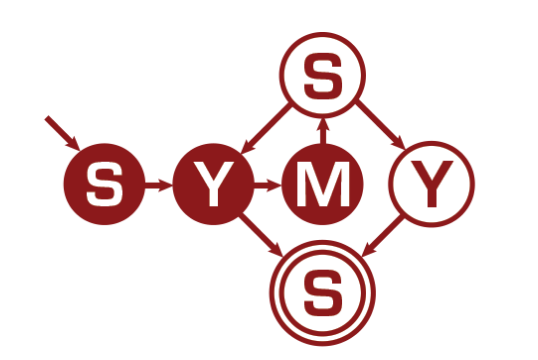Humans of SymSys: Sonia Targ
/"SymSys and other interdisciplinary programs teach you to become comfortable analyzing phenomena at many different levels, which overall enriches your understanding of any field."
Sonia Targ did her B.S. in Mathematical and Computational Science, with a secondary major in Symbolic Systems. She's currently finishing up her coterminal M.S. in Bioengineering, and then she’ll be off to med school at UCSF!
What drew you to the SymSys major, and what is your concentration?
I was initially drawn to the SymSys major because it aligned with my interests in linguistics, philosophy, and neuroscience. I thought it was super cool that there was a single major that touched on so many of my favorite topics. I decided to do my concentration in the neurosciences since I find the neurobiological mechanisms that give rise to behavior and experience incredibly fascinating.
What’s your favorite SymSys-related class that you’ve taken?
I really liked LINGUIST 130A: Introduction to Semantics and Pragmatics. It was fun to apply set theory and logic in a context outside of mathematics or computer science. I enjoyed learning how language works from theoretical and practical perspectives. I also liked that many of the ideas tied in with topics I had learned in philosophy (like “possible worlds”), making those concepts seem more applicable.
What is one piece of advice you'd like to offer to younger students?
I’d encourage younger students to plan out their degree more than I did! Have some goals in mind about what types of knowledge and skills you’d like to come away with, and try to build your academic plan around that. Sometimes students in Symbolic Systems say they feel like they did 5 minors, rather than a major, so if that seems like a problem to you, maybe choose a specific topic in your SymSys concentration in which to develop your expertise.
What's something cool you recently worked on?
I recently took the class BIOE 273: Biodesign for Mobile Health, a project-based course at the intersection of technology, healthcare, and entrepreneurship. My team decided to tackle the issue of post-surgical wound infections by developing a wearable wound sensor linked to a mobile app that alerts patients and doctors to problems with wound healing. While I had done plenty of laboratory research and engineering before this class, this course exposed me to aspects of product design and marketing, which form a large part of bringing impactful products to the public. My team won funding from the Stanford Byers Center for Biodesign to continue our project, and Nokia Bell Labs has expressed interest in partnering with us!
What underlying questions and issues do you hope to tackle/learn more about?
As I finish my M.S. in BioE and begin medical school, I hope to continue learning about the intersection of STEM and the lived human experience. To this end, during undergrad, I studied Medical Anthropology at Oxford University through BOSP, which complemented my SymSys and BioE background well. I got to think deeply about topics ranging from the medical definition of death, the ethics of organ transplantation, and how culture wildly affects the experience and pathology of disease. I think that my diverse academic background will help me to tackle the various problems I will face as a physician, some technical and some distinctly human.
As a diverse program with a lot of flexibility, many students struggle to find continuity across their coursework. (How) do you address this?
I never really found continuity across my coursework in the way you would in a more traditional major. However, I noticed the themes of reductionism (explaining complex phenomena by breaking them down to their fundamental units) and emergentism (understanding how parts of a whole interact to give rise to new properties) appeared over and over again throughout my coursework. SymSys and other interdisciplinary programs teach you to become comfortable analyzing phenomena at many different levels, which overall enriches your understanding of any field. For example, I learned to analyze the brain from the perspectives of anthropology, philosophy, neurobiology, engineering, and computing.
What else are you involved in at Stanford?
At Stanford, I have been involved with various organizations, including Stanford Students in Biodesign, Stanford Sympony Orchestra, and Taiwanese Cultural Society. I also write poetry in my spare time and have been published in Leland Quarterly and Z Publishing House’s anthology California’s Best Emerging Poets. I enjoyed promoting wellness on campus as a Peer Health Educator during my junior year. I started Stanford Music + Mentorship, a club that does music education outreach in East Palo Alto. As for research, I’ve done work on projects related to regenerative medicine and cognitive neuroscience in the Helms and Parvizi labs, respectively. I also feel lucky that I’ve gotten a chance to pursue my passion for teaching by being a TA for classes in Chemistry, Symbolic Systems, and Neurobiology.






